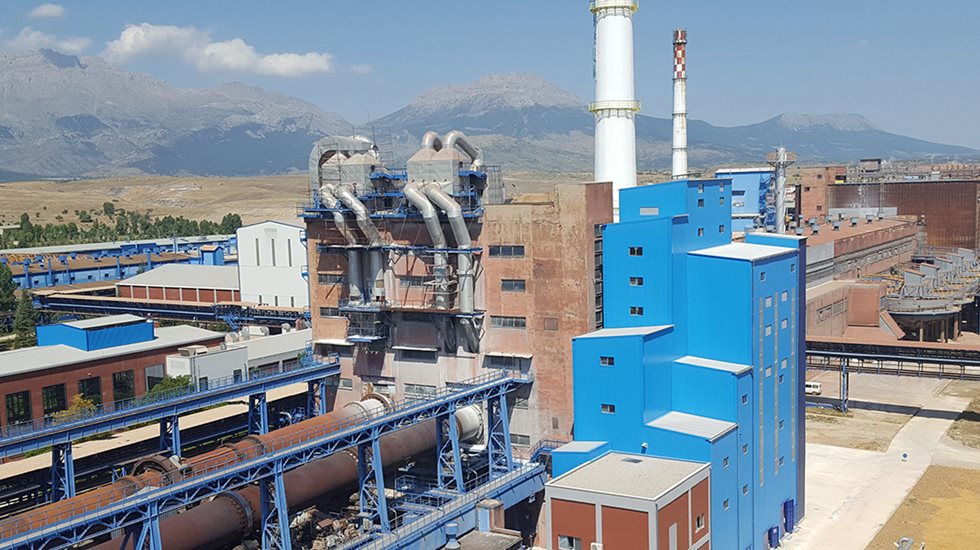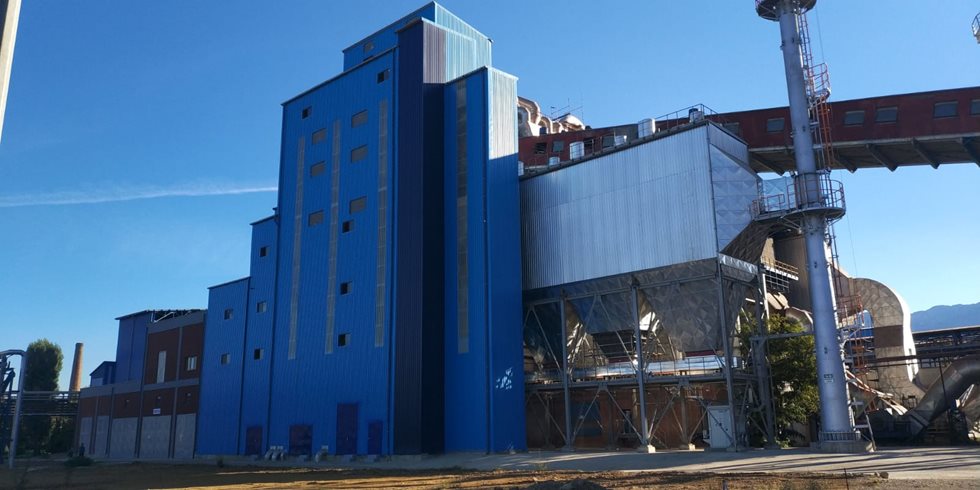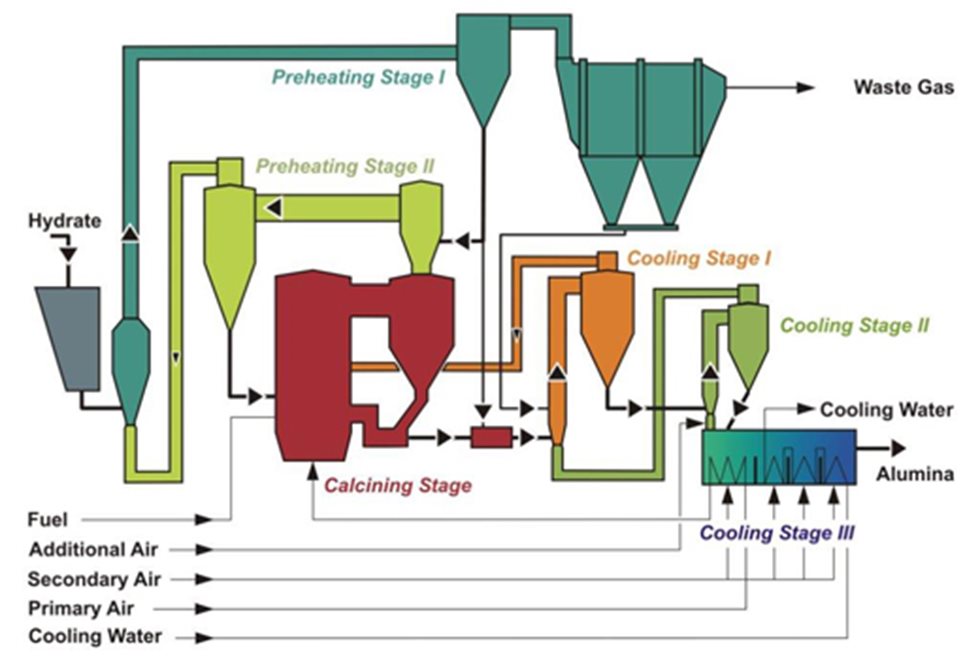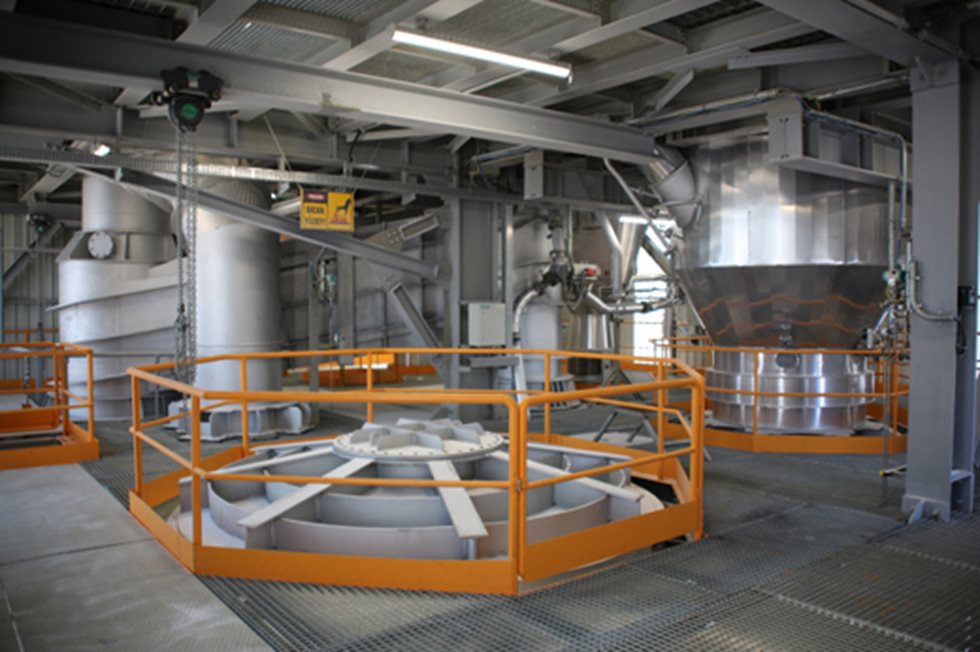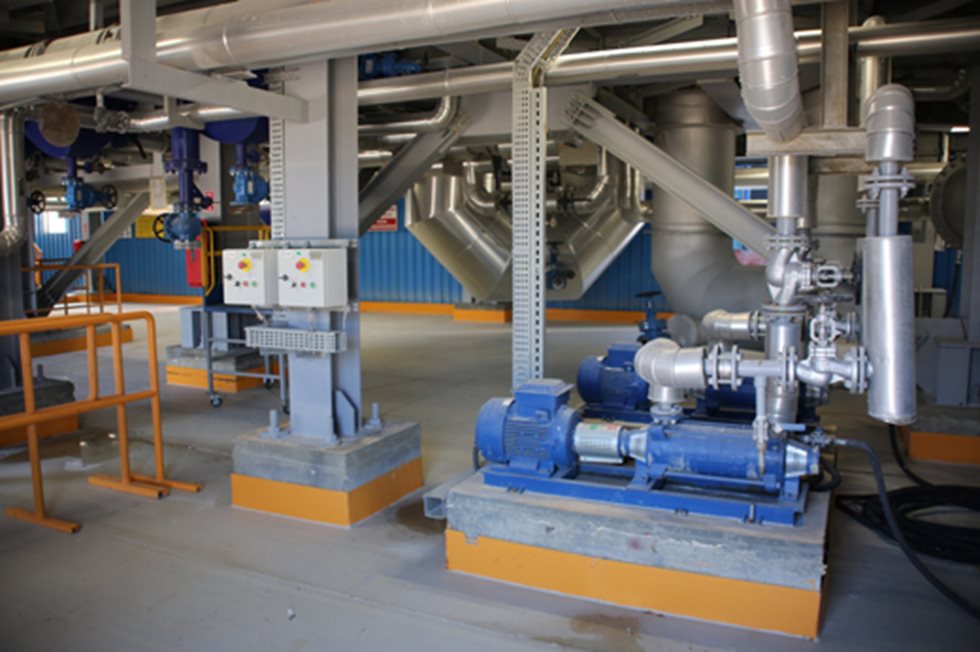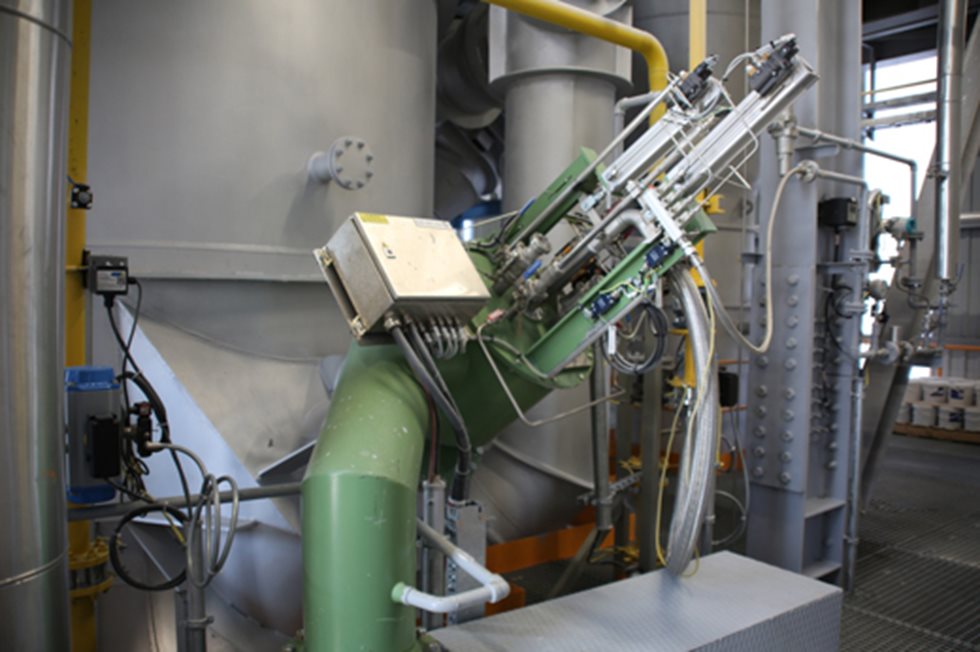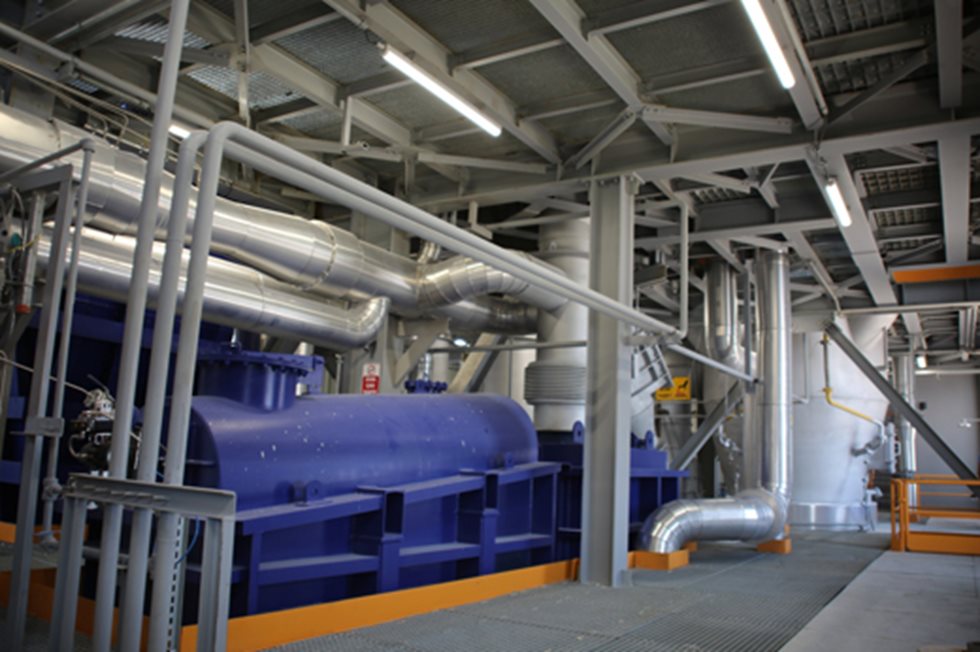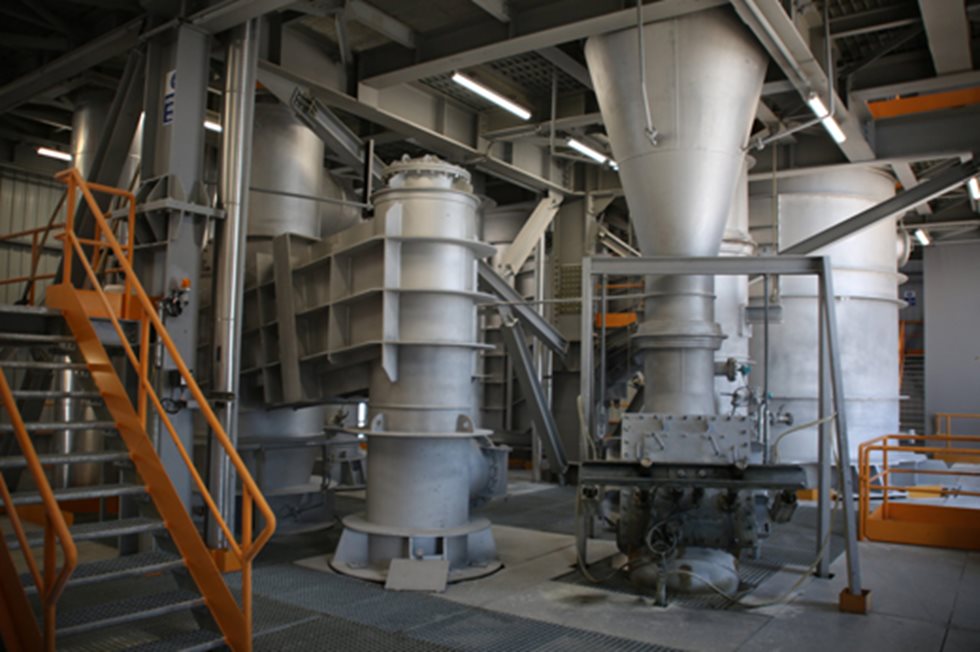ETI Aluminyum Inc., located in Seydisehir, Turkey, operates an integrated facility with bauxite mining, alumina refinery and aluminum smelter operations. With surplus hydrate production in their refinery operation, compared to what is required for the smelter operation as smelter or metallurgical grade alumina, ETI Aluminyum Inc. is also producing and selling other hydrate and alumina-based products. The refinery was started up in 1973 and employed rotary kilns for the calcination step in the refinery.
Calcination is the last step in the process and is critical as this determines several of the key product quality parameters which are important for how the material performs when used as a dry scrubbing medium and feedstock in the aluminum smelter. Having recently converted the smelter operation from Söderberg cells to Pre-baked, a higher demand is put on the alumina quality. In addition, as the calcination reactions are highly endothermic and the temperatures required to meet the product quality are very high (up to 1000°C), vast amounts of energy are consumed in the calciners. With rotary kilns with heat recovery the specific fuel energy consumption is typically more than 4 GJ/t, thereby representing a large part of the production cost for the alumina.
In 2014, ETI Aluminyum commissioned Outotec to design a calciner capable of producing both smelter grade alumina (SGA) and ceramic grade alumina (CGA), which requires a much higher operating/calcination temperature. Another objective was to significantly reduce operating costs by minimizing the specific fuel energy consumption. The solution was a purpose-built plant that minimizes energy consumption and investment costs while catering for the wide range of processing conditions needed to produce these very different alumina qualities. Close cooperation combining the technical expertise of both companies was vital, and SGA and CGA of the required quality are now produced in one calciner, opening up new revenue streams.
Serving Turkey’s aluminum needs
ETI Aluminyum is Turkey’s only integrated aluminum plant capable of extracting aluminum from ore as well as handling production from mining to final product. As the company has more hydrate production in their refinery operation than is needed for smelter operation or metallurgical grade alumina, it also produces and sells other hydrate and alumina-based products.
The company currently provides 10% of Turkey’s annual aluminum requirement – some 82,000 tons – from its Konya Seydişehir plant. Annually the plant can treat 550,000 mt of bauxite ore and produce 160,000 mt of cast products, as well as 260,000 mt of aluminum oxide (alumina) using 400,000 mt of aluminum hydroxide produced at the plant.
